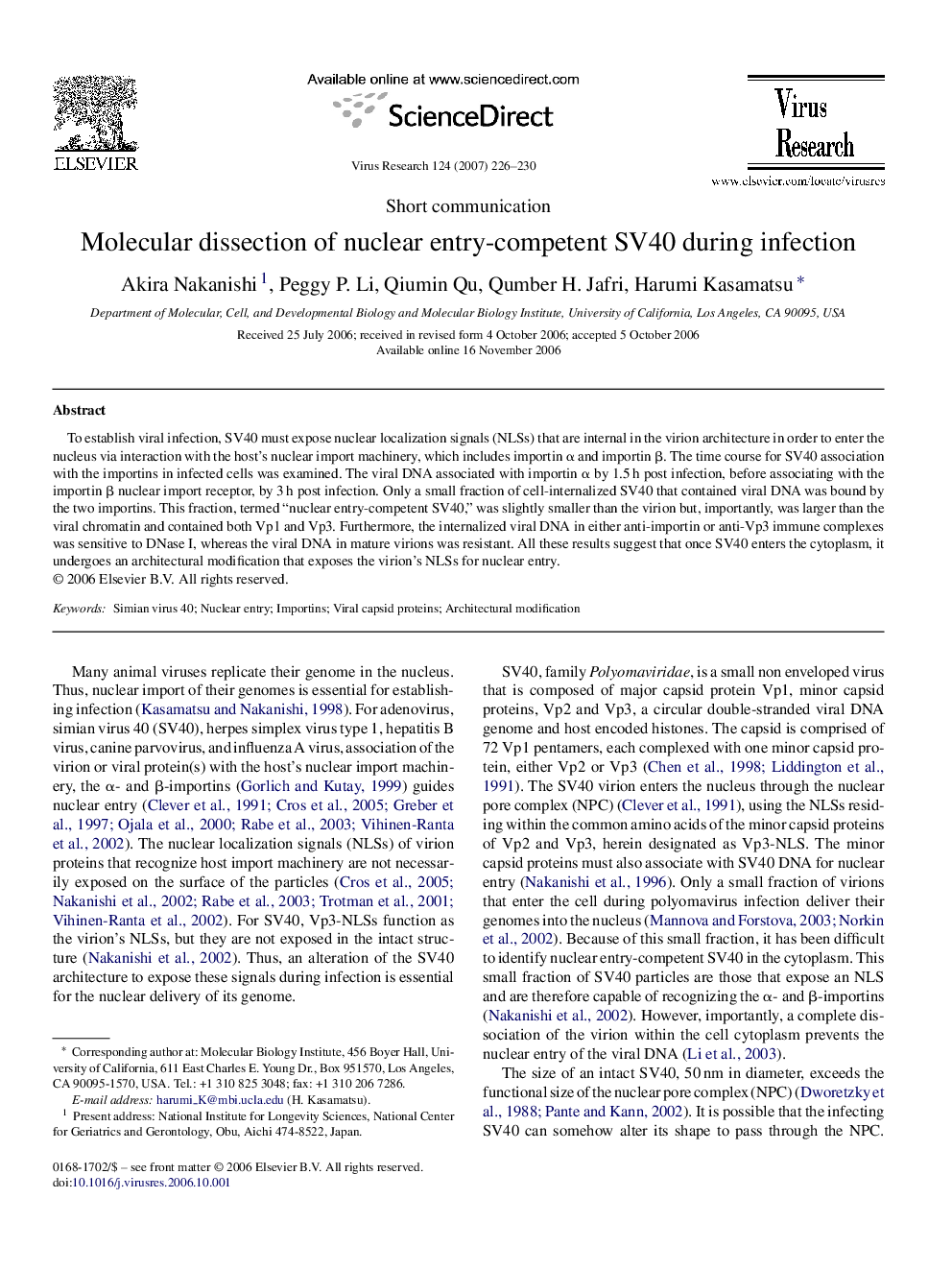| Article ID | Journal | Published Year | Pages | File Type |
|---|---|---|---|---|
| 3430993 | Virus Research | 2007 | 5 Pages |
To establish viral infection, SV40 must expose nuclear localization signals (NLSs) that are internal in the virion architecture in order to enter the nucleus via interaction with the host's nuclear import machinery, which includes importin α and importin β. The time course for SV40 association with the importins in infected cells was examined. The viral DNA associated with importin α by 1.5 h post infection, before associating with the importin β nuclear import receptor, by 3 h post infection. Only a small fraction of cell-internalized SV40 that contained viral DNA was bound by the two importins. This fraction, termed “nuclear entry-competent SV40,” was slightly smaller than the virion but, importantly, was larger than the viral chromatin and contained both Vp1 and Vp3. Furthermore, the internalized viral DNA in either anti-importin or anti-Vp3 immune complexes was sensitive to DNase I, whereas the viral DNA in mature virions was resistant. All these results suggest that once SV40 enters the cytoplasm, it undergoes an architectural modification that exposes the virion's NLSs for nuclear entry.
